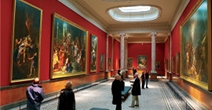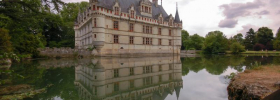 Home
Home- > Tours
- > Poitou-Charentes
- > Vienne
- > Poitiers
- > Discover vienne
Discover vienne
| Topic | Sciences and discovery |
| Departure | POITIERS (86) |
| Details | Visit the Department of vienna and its tourist sites. Come discover the many and varied landscapes ... |
Discover Gencay

Rural Breeding and Culture, located 25 km south of Poitiers and 30km from the Futuroscope, 10km from the Valley of the Monkeys and a labyrinth
Accommodation nearby
Poitiers, 2000 years of Art and History
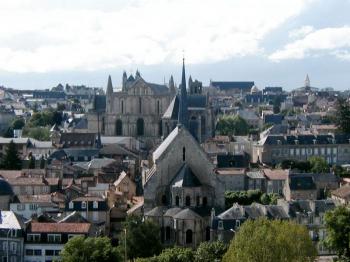
South of the Loire, from Paris (1h30) and Bordeaux (1:40), to reach the beaches of Charente-Maritime, the Poitevin marshes and in the immediate vicinity of Parc du Futuroscope, Poitiers is a tourist destination while leading. Capital Regional, Town and Country Art and History, is a prestigious architectural heritage of more than 80 buildings classified as historic monuments awaits you.
Visit Poitiers is going to meet the 2000 years of history through the lively pedestrian streets that lend themselves to walking, the path of discovery and loitering. The Notre Dame la Grande, a jewel of Romanesque art admires both day and night. Mansions, modern and contemporary creations alongside many churches and public buildings, witnesses of major Romanesque and Gothic art. Particularly noteworthy, the Cathedral of St. Peter and his furniture except the church of Saint Hilaire-le-Grand, step pilgrims of Saint Jacques de Compostela, the palace of the Counts and Dukes of Aquitaine, major monument of the Gothic the Baptistery of St. John, one of the oldest Christian monuments of the West ...
Several famous people (St. Radegund, Eleanor of Aquitaine, Rabelais, Jeanne d'Arc ...) and many legends and anecdotes have left their imprint in the past Poitevin. So many pages of history to be discovered by strolling through the streets of the city ...
Accommodation nearby
Discover Saint-Benoit

Saint-Benoit, in Poitou (86) with its 7 200 inhabitants and its 1300 hectares, is one of the most beautiful communes of France. The heart of this small town is nestled between two beautiful valleys thoroughly mastered and tastefully decorated. She awaits you with its parks and flowers.
Accommodation nearby
Angles-Sur-L'Anglin, one of the nicest town of France
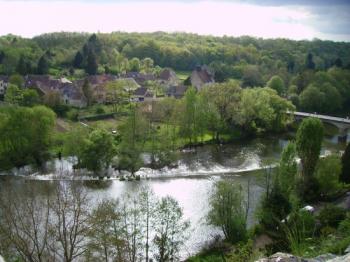
This small, tranquil and fascinating village, where everything invites you to stroll and dream will lead us on paths of history. The history of Angles-sur-l'Anglin or rather the city of Angles-sur-l'Anglin if we respect the past, is certainly related to that of the region Poitou, but it does not seem unless they forged a unique identity to which its people are very attached. Located on the borders of Poitou, Touraine and Berry, Angles has through the centuries to take its location to be both a compendium of different cultures and an entity exception.
The town's origins that seem more controversial. Indeed, the modern tourist guides emphasize the thesis that would Englishman owes its name, like England, a Germanic people came from Schleswig, now the German Land of the northern plain: the Angles, whose descendants will be installed near the Anglin seventh century.
Whatever the origins of Angles, well before our era that civilization left its footprints in Angles, not yet Angles. Indeed, the discovery of the prehistoric site of Magdalenian "Roc the Wizards, left us an amazing testimonial: Man lived there about 14 000 years on the banks of the Anglin.
This site covers about fifty meters and comprises two distinct parts:
- The Cellar - otherwise known Taillebourg cellar where Lucien Jacob discovered traces of Middle Magdalenian in 1927 by Mr. Rousseau. In 1947, Ms. de Saint-Mathurin and Mrs. Garrod resume excavation of the basement and discovered a buffalo in relief
- Free Bourdois where ladies of Saint-Mathurin and Mrs. Garrod opened a trench that led to the discovery of the frieze carved Magdalenian.
These discoveries and the interest they generate are of Angles-sur-l'Anglin a Mecca of prehistory as well as Lascaux. But there are 14 000 years, Angles-sur-l'Anglin did not exist as such, in fact, her story begins roughly with the second millennium. The story revolves mainly around angles of three monuments: the fortress, the chapel Holy Cross Chapel and St. Peter.
- The fortress
Probably chosen for its strategic position as are the cl iffs of Angles (they dominate about 50 meters Valley Anglin), built the castle and is quoted as 1025. In the early fifteenth, two bishops undertook to revise the old fortress. Hugues de Combarel had built a dwelling house which already evokes the Renaissance. Concern accreditation begins to prevail over the interests of defense. It also modifies the old dungeon and sign his book by putting his arms carved: 3 coquille Saint-Jacques and a half wheel of a spur. The late fifteenth century marked the end of the heyday of the fortress. Pierre d'Amboise built the episcopal residence of Dissay is preferred to castellany Angles. To this succeeded the wars of religion, the sling. An expert on the condition of the fortress was commissioned in 1708. The parliament of Paris free the bishops of Poitiers their duty of care. In 1792, the fortress in ruins, is still confiscated and the municipality decides to use it as a stone quarry. But access is so difficult and demand very large, the ruins will be saved. The town bought the castle for one symbolic franc in 1986 and works to safeguard it from.
- The chapel Sainte-Croix
I Isembert to 1040 is behind the abbey. In 1088, Hugh VI of Lusignan offers the abbey church at Saint-Cyprien de Poitiers. Around 1094, Pope Urban II is replaced by Benedictine monks of the Canons Regular of the Order of St. Augustine, who held the abbey until the Revolution. But it was not until the late twelfth century to see the rise abbey church which we see today the remains. Begun in 1175, it was consecrated in 1192, during the reign of Philip Augustus. The abbey soon enriched by many gifts and exchanges with the Mercy of God. But at the end of the Hundred Years War in 1428, resources have declined so drastically that it remains that 10 monks instead of 24. The abbots and one after another from the late sixteenth century, Holy Cross Abbey is a commendatory. In 1768, at the end of the reign of Louis XV, there are still 5 monks. During the Revolution, the canons' houses are sold as national property to individuals, but the abbey remains state property and no one maintains. In ruins, the road angles to St. Pierre de Maille was built through the rubble in 1835.
- The chapel Saint-Pierre
It was erected on the highest point of the cliff. Around the chapel remains a feudal mound are still visible today. The chapel is separated from the fortress by the "cut of the English 'crack arranged by natural rights. Legend has it that after the defeat by the English in Maupertuis's King John the Good, they are arrived at angles to capture the castle "in this passage in cutting the rock in one night to surprise the guards' . Similarly the constable had taken the castle by the English passage. The chapel was built in the XIIth century. The current choir of the chapel has a shape in the quarter-circle as the choir of the chapel collapsed with the cliff in the fifteenth and was rebuilt roughly along the new edge. Currently, it houses many exhibits and is one of the views of the most remarkable corners.
See also
The "Cueille" : Cobblestone pedestrian alley that provides communication between the upper and lower town. It probably owes its name because the people gathered water at the bottom of this lane.
The "Arceau" : The cellars at the arch served as a warehouse for salt traded at major fairs and Angles for salt smuggling. Its architecture is inspired by the Spanish cities (Zaragoza).
Accommodation nearby
Lussac-Les-Châteaux
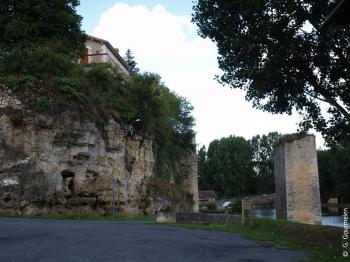
CHIEF PLACE OF CANTON GATHERS GREAT QUANTITY OF PREHISTORIC AND HISTORIC RESOURCES. Museum of Prehistory Raymond Touchard (engraved plates of the Magdalenian period,) the museum of old tools, the church of St Mary Magdalene, the piles of the old drawbridge, the hermitage (called also Leprosy), tanner district ... autan are places of interest to lovers of art and history. Madame de Montespan (1640-1717) famous mistress of Louis XIV, was baptized in Lussac les Chateaux. The tomb of Chancellor Leo Pineau (1861-1965) is visible in the npouveau cemetery on the road to Limoges.
Accommodation nearby
Mazerolles, canton Lussac-Les-Châteaux

The church of Saint-Romain (XII) now houses the statue of St Sylvain (XVI) retained formerly Loubressac, aboriginal gathering place on the banks of the Vienne. Nearby, in the Hundred Years War, a Franco-British skirmish took place in 1369, during which John Chandos constable of the Black Prince, was fatally blessé.Son cenotaph is visible on the road Gouex. An old mill (near the bridge) replaces a mill using the force hydraulyque waters of Vienna long.
Accommodation nearby
Discovery of the medieval town of Chauvigny
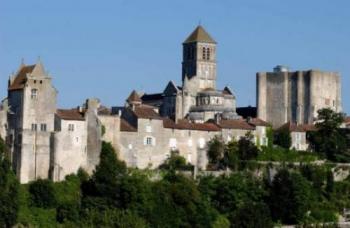
Step one must stay in Vienna, located 20 minutes from the Futuroscope, Chauvigny is a welcoming city. City of art, his five castles located on a promontory overlooking the same come make it a unique site in Europe. Chauvigny is also a Mecca of art book where you can find several churches: St. Peter's Collegiate (XII) famous for its painted columns and capitals, Notre Dame, St. Peter churches known for its pre-Romanesque painting s. The Dungeon of Gouzon (XI and XIII century) offers a panoramic view of the city and houses an original presentation of the various local productions through the ages (stone quarries, porcelain, mills and lime kilns, steam ...) . Just beside the Museum of Archeology and Ethnology presents twenty centuries of daily life (Gallo Roman furniture, collection of old tools, caps ...) All year round visits discovery of the medieval city are organized under the guidance of lecturers guides approved by the Heritage Branch. Chauvigny is the cradle of porcelain in Poitou-Charentes internationally recognized for its quality and has the largest gourmet tables. His name also refers to the stone of which many monuments are adorned (Opera Garnier, the Louvre, the Loire bridges ...) The cultural event: Winter season (from October to May) Summer Festival (July and August) Tourist events: The Giants of the Sky: spectacle of free-flying birds from the five continents - The rail-bike: ride with family or friends on a disused railway line, to discover how fun landscapes Country Chauvinois
Accommodation nearby
Latest news on : Discover Vienne
Tourism near
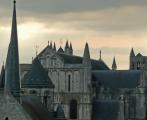 Visit the city of Poitiers
Visit the city of Poitiers - 3 Museum
- 5 Monuments
Tours
 Poitiers, an artistical and historical city
Poitiers, an artistical and historical city
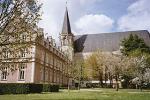 Welcome to Ligugé
Welcome to Ligugé






















